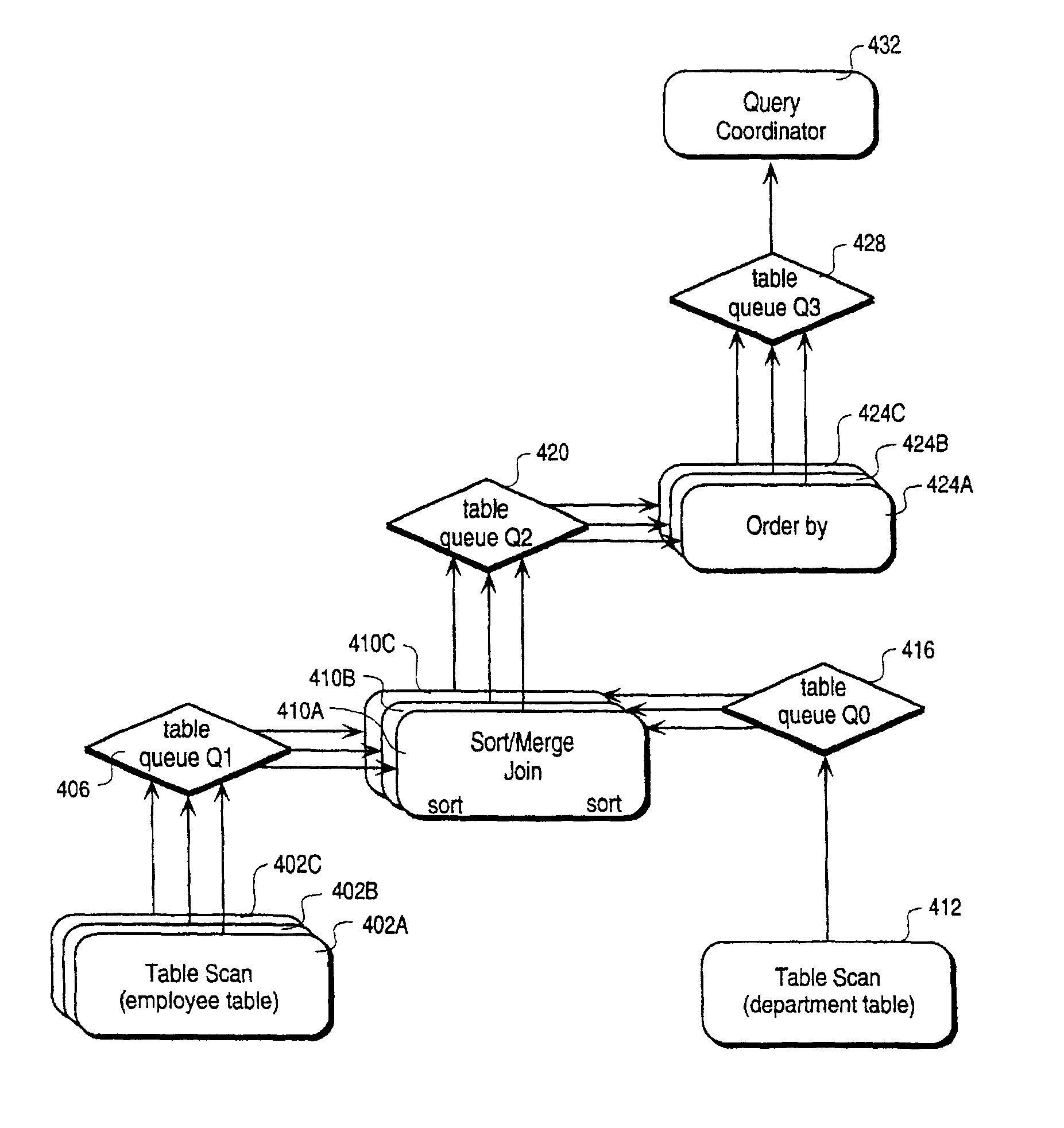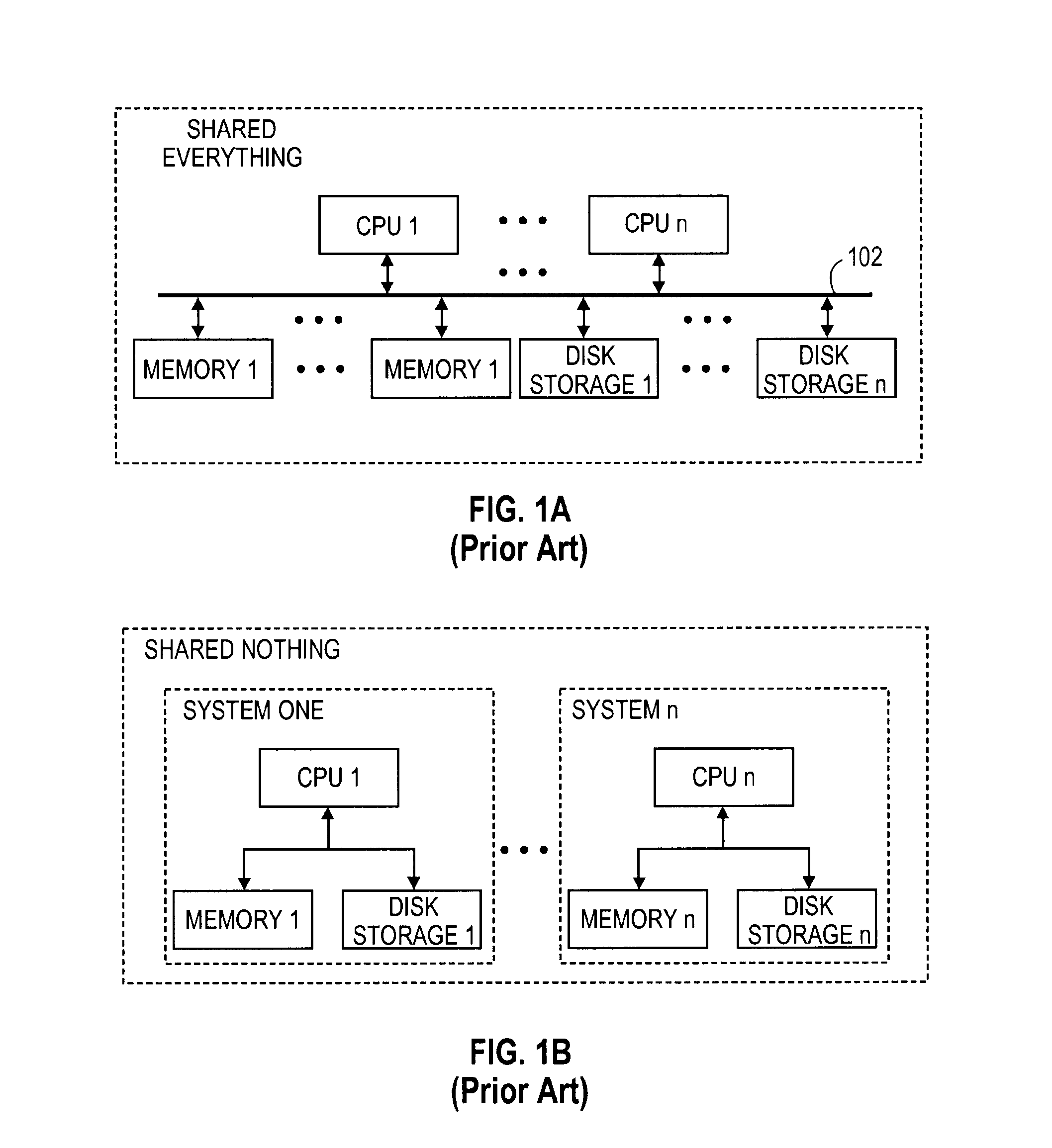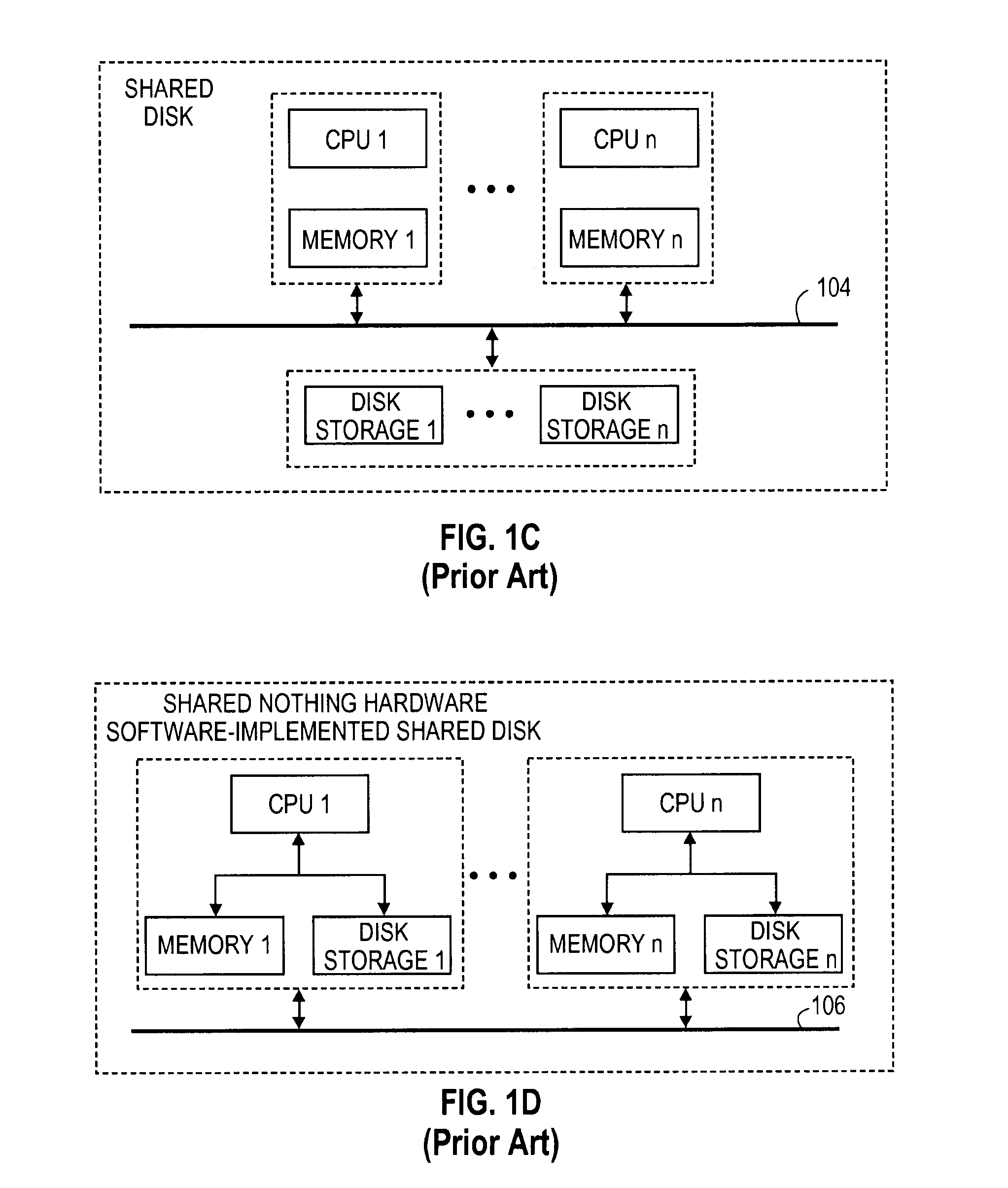Method and apparatus for implementing parallel operations in a database management system
a database management system and parallel operation technology, applied in the field of parallel processing, can solve the problems of limiting the use of the location of the data as a means of partitioning, the inability to dynamically adjust the type and degree of parallelism, and the difficulty of mixing parallel queries and sequential updates in one transaction without requiring a two-phase commi
- Summary
- Abstract
- Description
- Claims
- Application Information
AI Technical Summary
Benefits of technology
Problems solved by technology
Method used
Image
Examples
example
[0154]Referring to FIG. 3C, each dataflow scheduler starts executing the deepest, leftmost leaf in the DFO tree. Thus, the employee scan DFO directs its underlying nodes to produce rows. Eventually, the employee table scan DFO is told to begin execution. The employee table scan begins in the ready state because it is not consuming any rows. Each table scan slave DFO SQL statement, when parsed, generates a table scan row source in each slave.
[0155]When executed, the table scan row source proceeds to access the employee table scan in the DBMS (e.g., performs the underlying operations required by the DBMS to read rows from a table), gets a first row, and is ready to transmit the row to its output table queue. The slaves implementing the table scan replies to the data flow scheduler that they are ready. The data flow scheduler monitors the count to determine when all of the slaves implementing the table scan have reached the ready state.
[0156]At this point, the data flow scheduler deter...
PUM
 Login to View More
Login to View More Abstract
Description
Claims
Application Information
 Login to View More
Login to View More - R&D
- Intellectual Property
- Life Sciences
- Materials
- Tech Scout
- Unparalleled Data Quality
- Higher Quality Content
- 60% Fewer Hallucinations
Browse by: Latest US Patents, China's latest patents, Technical Efficacy Thesaurus, Application Domain, Technology Topic, Popular Technical Reports.
© 2025 PatSnap. All rights reserved.Legal|Privacy policy|Modern Slavery Act Transparency Statement|Sitemap|About US| Contact US: help@patsnap.com



